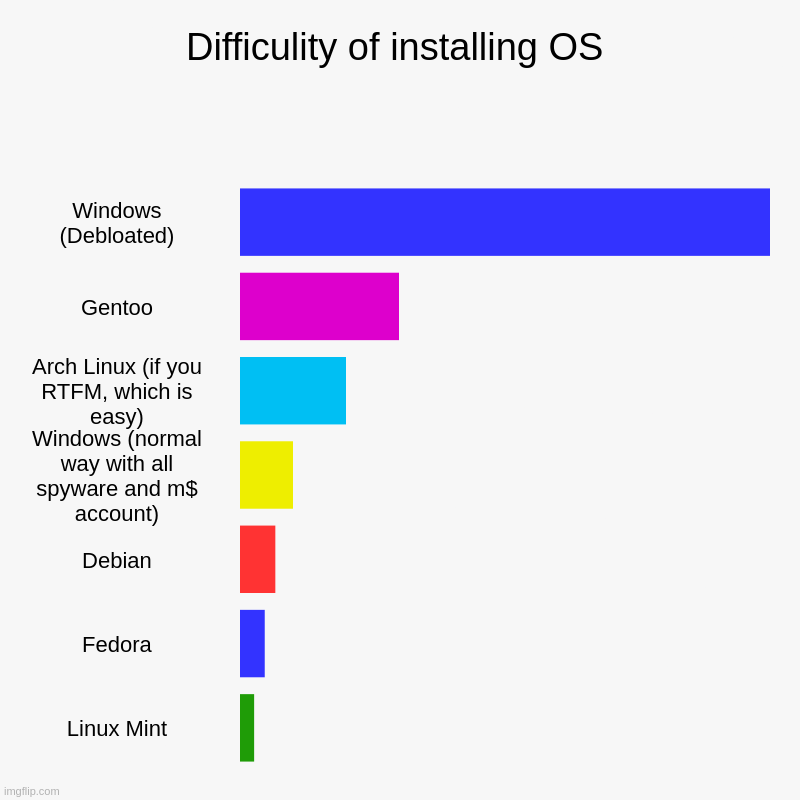this post was submitted on 21 Nov 2024
799 points (89.2% liked)
linuxmemes
22706 readers
1063 users here now
Hint: :q!
Sister communities:
Community rules (click to expand)
1. Follow the site-wide rules
- Instance-wide TOS: https://legal.lemmy.world/tos/
- Lemmy code of conduct: https://join-lemmy.org/docs/code_of_conduct.html
2. Be civil
- Understand the difference between a joke and an insult.
- Do not harrass or attack users for any reason. This includes using blanket terms, like "every user of thing".
- Don't get baited into back-and-forth insults. We are not animals.
- Leave remarks of "peasantry" to the PCMR community. If you dislike an OS/service/application, attack the thing you dislike, not the individuals who use it. Some people may not have a choice.
- Bigotry will not be tolerated.
- These rules are somewhat loosened when the subject is a public figure. Still, do not attack their person or incite harrassment.
3. Post Linux-related content
- Including Unix and BSD.
- Non-Linux content is acceptable as long as it makes a reference to Linux. For example, the poorly made mockery of
sudoin Windows. - No porn. Even if you watch it on a Linux machine.
4. No recent reposts
- Everybody uses Arch btw, can't quit Vim, <loves/tolerates/hates> systemd, and wants to interject for a moment. You can stop now.
5. 🇬🇧 Language/язык/Sprache
- This is primarily an English-speaking community. 🇬🇧🇦🇺🇺🇸
- Comments written in other languages are allowed.
- The substance of a post should be comprehensible for people who only speak English.
- Titles and post bodies written in other languages will be allowed, but only as long as the above rule is observed.
Please report posts and comments that break these rules!
Important: never execute code or follow advice that you don't understand or can't verify, especially here. The word of the day is credibility. This is a meme community -- even the most helpful comments might just be shitposts that can damage your system. Be aware, be smart, don't remove France.
founded 2 years ago
MODERATORS
you are viewing a single comment's thread
view the rest of the comments
view the rest of the comments

I think the traditional way to do that is via dm-crypt, which you can set up with an ssh server.
You can also use a network-shared file rather than a password for LUKS but it's not as straightforward to set up as a password. If you are doing something like tailscale then it'd be unlocked as long as you are on the VPN
Typing in a password in-person at a data center would be a huge hassle, agreed
But...it's literally what the tpm chip is for. Like there may be other options, but the tpm chip's purpose in life is to do this thing. And it's been doing that for a decade. Seems pretty traditional to me. But Linux folks in some venues treat it like a plague that needs to be eradicated.
Looking at RHEL docs it seems to also work there. The same instructions probably work in Fedora but idk I've never done it myself
I've done the recommendation for opensuse and fedora, both failed to boot properly. Weirdly arch was the easy one that worked out of box.